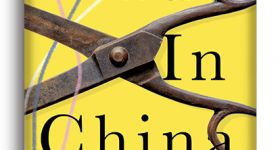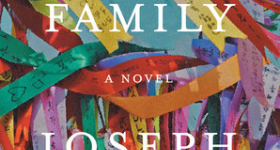When I was 17, I told my mom that I had tried cannabis.
Cannabis was a completely foreign substance to my parents. In common use of the Chinese language, using cannabis and other drugs is known -- in precise translation -- as “inhaling poison.” The idea that their daughter would be “inhaling poison” was so unfathomable that my parents could not have dreamed I was smoking cannabis unless I told them.
After my confession, my mom was (understandably) very worried for her poison-inhaling daughter. I tried to alleviate her concerns by showing her The Union, a documentary on the myths surrounding marijuana and, more significantly, the serious harms of the War on Drugs. However, prevailing misinformation prevented her from shaking the image of her daughter as a poison-inhaler, and this probably would have been true in the minds of most Asian parents.
While at Northwestern University, I founded a chapter of Students for Sensible Drug Policy, a grassroots organization of students who aim to end the War on Drugs. On the surface, the War on Drugs alludes to the prohibition of cannabis and other drugs, but it also represents the misinformation around drugs and the racist propaganda surrounding who is using, producing, and selling them.
Ethan Nadelmann, the Executive Director of Drug Policy Alliance, puts it best when he says that the drug policy reform movement is made up of “people who love drugs, people who hate drugs, and people who don’t give a damn about drugs.” Drug policy reformers all acknowledge that drug use is a reality with potentially serious negative consequences. However, we do not believe in forcibly eliminating use through stigma and punishment; rather, we seek to reduce harm through education and treatment. This is why and how we fight the drug war.
The racist propaganda used to fuel the War on Drugs in the United States has historically biased us towards picturing a yellow face when we hear “opium user”; a brown face for “marijuana user”; a black face for “crack user.” In the 1800s, due to the influx of Chinese immigrants, Chinese labor could be purchased at a lower price, threatening the economic welfare of American settlers. The 1875 San Francisco opium law was an anti-Chinese law disguised as an anti-drug law. Drug laws are America’s specialized form of legalized discrimination; America repeated this systematic discrimination with Mexicans and marijuana in 1937, and with African Americans and crack cocaine in the late 1980s.
Today, the War on Drugs is not really a war on drugs, but a war on people who use drugs. Although white Americans are more likely than black Americans to have used most illegal drugs, black people are disproportionately subject to illegal stop-and-frisk searches, disproportionately targeted by civil asset forfeiture laws, disproportionately incarcerated, and disproportionately killed. The racism becomes even more apparent when considering the fact that people of color are disproportionately subject to police brutality even when they have done nothing wrong.
As an Asian American drug policy reformer, I am dismayed at the absence of Asian American voices in conversations on the War on Drugs. The model minority stereotype means we are rarely suspected of drug use or dealing, but it also means that in conversations around the relationship between the drug war and the police state, our voices feel irrelevant.
But our voices matter, because the War on Drugs is also a war on us. Like people of other races, Asian Americans use drugs and sell drugs. We maintain a culture of silence in order to “save face”; however, silence cannot save us from the negative effects of the drug war. As people of color; the tactics of control that have been used on black and brown people have been and will continue to be used on people who look like us. America is the number one consumer of illegal drugs. Countries in Asia feed American dependence. Fentanyl, which Prince overdosed on, is manufactured in China. The production of ecstasy is destroying forests and communities in Cambodia. The Philippines is a major site of meth production and distribution for the global illegal drug trade. Asian Americans are a natural target in this drug war as witch hunt. In fact, the Asian American and Pacific Islander prisoner population has increased by over 250 percent between 1990 to 2000. While it is difficult to decipher the detailed causes and effects of our incarceration, when the United States’ prison population has grown by 500 percent as a whole in the last forty years, it is impossible to deny that America’s judicial system has been completely eroded since the start of the War on Drugs. History has proven that we cannot stop the supply of drugs, but we should raise our voices when faced with injustice.
Asian Americans are the fastest growing racial group in the United States, and our political influence is growing, too. Nine states seek to regulate cannabis for medical or adult use this year, proving that the majority of people disapprove of the War on Drugs. However, while legalization would be a significant battle for us to win, it only makes the purchase and use of cannabis legal. Legalization does not eliminate the negative stereotypes of drug use, fix the lives of drug war victims, nor dismantle the decades of racism that the War on Drugs has enforced. New rights come with new obligations, and in order for us to win the drug war, Asian Americans must participate in the political process, vote in favor of drug education as opposed to incarceration, and make our culture is one that supports, not punishes drug users.
__
Frances Fu (‘11) is the Pacific Region Outreach Coordinator for Students for Sensible Drug Policy. In addition to her role as Outreach Coordinator, Frances manages the Diversity Awareness Reflection and Education Committee, and the Peer Education Program. While at Northwestern University, Frances served as President of the Panhellenic Association, where she challenged her peers to approach their work from a lens of inclusion, social justice and creativity. She is originally from New York.









Comments